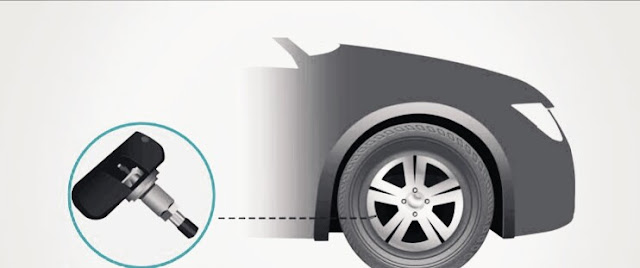The purpose of the tire pressure monitoring system (TPMS) in your vehicle is to warn you that at least one or more tires are significantly under-inflated, possibly creating unsafe driving conditions. The TPMS low tire pressure indicator is a yellow symbol that illuminates on the dashboard instrument panel in the shape of a tire cross-section (that resembles a horseshoe) with an exclamation point.
That indicator light in your vehicle has a history. It’s a history rooted in years of uncertainty about proper tire pressure and many serious car accidents that might have been avoided had drivers known their air pressure was low. Even now, it’s estimated that a substantial number of vehicles hit the road each day with underinflated tires. However, proper tire maintenance with the aid of a TPMS can and does help prevent many serious accidents.
Before this indicator light became commonplace, knowing whether your air pressure had reached unsafe levels meant getting out, crouching down, and using a tire gauge. With few exceptions, this was the only pressure-checking tool ordinary consumers had at their disposal.
Then, in response to a surge in accidents due to underinflated tires, the US government passed the Transportation Recall Enhancement, Accountability, and Documentation (TREAD) Act. One of the outcomes of this legislation is that most vehicles sold in the United States since 2007 include a tire pressure monitoring system of some kind.
Not every TPMS works the same way. The illumination of the low tire pressure indicator represents the final step in the process of either an indirect TPMS or a direct TPMS.
An indirect TPMS typically relies on wheel speed sensors that the anti-lock brake system uses. These sensors measure the rate of revolution each wheel is making and can be used by on-board computer systems to compare with each other and to other vehicle operation data such as speed.
Based on the rate of revolution of each wheel, the computer can interpret the relative size of the tires on your vehicle. When a wheel starts spinning faster than expected, the computer calculates that the tire is underinflated and alert the driver accordingly.
When a wheel starts spinning faster than expected, the computer calculates that the tire is underinflated and alert the driver accordingly.
So, an indirect tire pressure monitoring system doesn’t actually measure tire pressure. It’s not electronically processing the same kind of measurement you might see with a tire gauge. Instead, an indirect tire pressure monitor simply measures how fast your tires are rotating and sends signals to the computer that will actuate the indicator light when something in the rotation seems amiss.
-- Relatively inexpensive compared to a direct TPMS
-- Requires less programming/maintenance over the years than a direct TPMS
-- Less overall installation maintenance than its direct counterpart
-- May become inaccurate if you purchase a bigger or smaller tire
-- May be unreliable when tires are unevenly worn
-- Must be reset after properly inflating every tire
-- Must be reset after routine tire rotation
Direct TPMS uses pressure monitoring sensors within each tire that monitor specific pressure levels – not just wheel revolution data from the anti-lock brake system.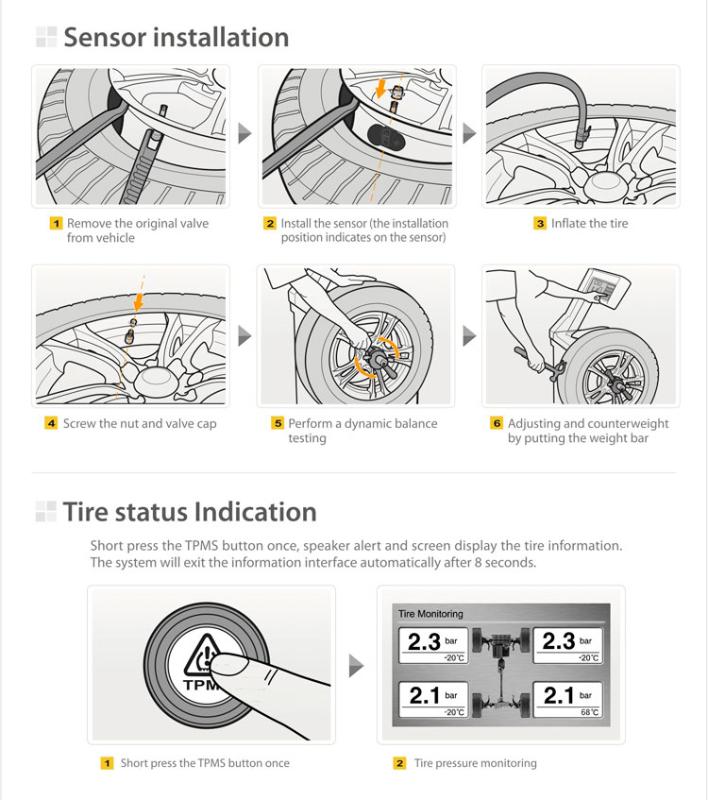
Sensors in a direct TPMS may even provide tire temperature readings. The direct tire pressure monitoring system sends all of this data to a centralized control module where it’s analyzed, interpreted, and, if tire pressure is lower than it should be, transmitted directly to your dashboard where the indicator light illuminates. A direct tire pressure monitor usually sends all of this data wirelessly. Each sensor has a unique serial number. This is how the system not only distinguishes between itself and systems on other vehicles, but also among pressure readings for each individual tire.
Many manufacturers use proprietary technology for these highly specialized systems, so replacing a TPMS in a way that’s consistent and compatible with your vehicle will require an experienced, knowledgeable technician.
-- Deliver actual tire pressure readings from inside the tire
-- Not prone to inaccuracies because of tire rotations or tire replacements
-- Simple resynchronization after tire rotation or tire replacements
-- Batteries inside the sensors usually last for about a decade.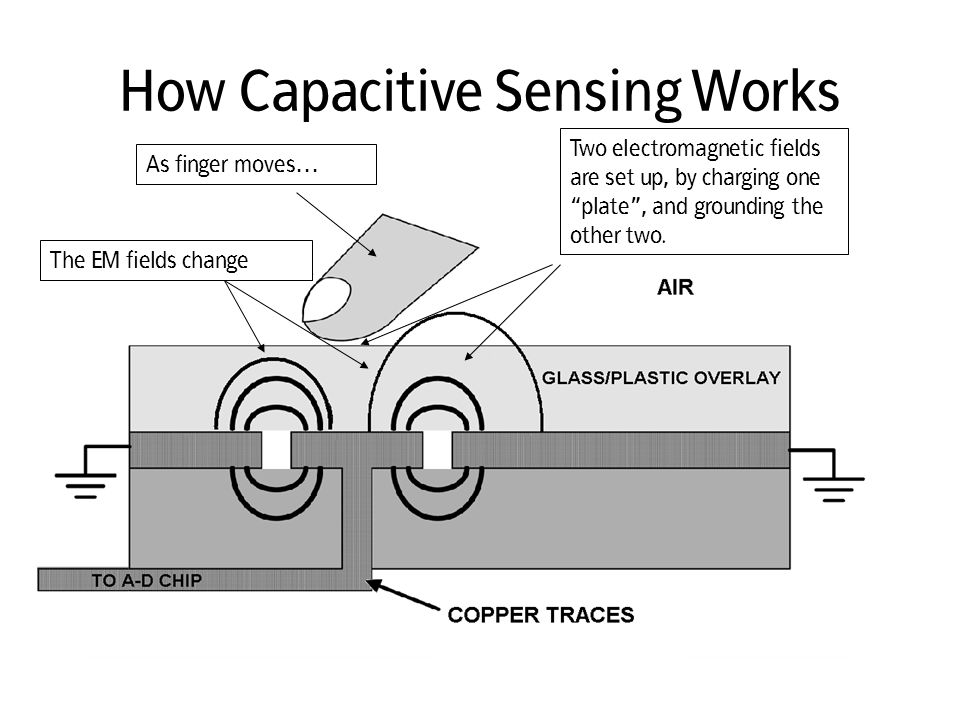
-- May be included in a vehicle’s spare tire
-- More expensive overall than an indirect TPMS
-- Though simple, resynchronization may require costly tools.
-- Battery rarely serviceable; if the battery is drained, the whole sensor must be changed.
-- Proprietary systems make installation, service, and replacement confusing for consumers and auto shops.
-- Sensors are susceptible to damage during mounting/demounting
Although the methods may be different, both systems serve the same purpose and activate the same indicator light. Even though a TPMS can deliver accurate alerts when properly maintained, it’s not a replacement for manual air pressure checks, consider it just another item in your car maintenance toolbox.
There’s never a good time for a flat. That’s why Bridgestone DriveGuard tires are masterfully engineered to keep you moving for up to 50 miles at speeds up to 50 MPH without disruption.
There’s never a good time for a flat. That’s why Bridgestone DriveGuard tires are masterfully engineered to keep you moving for up to 50 miles at speeds up to 50 MPH without disruption.
See Details Find Your Fit
Why are tire pressure monitoring systems so relevant in modern cars? Do they have a function or are they just an added expense to vehicle owners? Are the TPMS units located in the tires or on the wheel?
We will try to answer these and some additional questions in today's blog post.
A tire pressure monitoring system (TPMS) is a system in your car that alerts the driver when the air pressure drops inside the tire. This is an electronic system that connects the sensor (placed on the rim) with the monitor (on the vehicle's dashboard) in order to show whether the tires are properly inflated or not.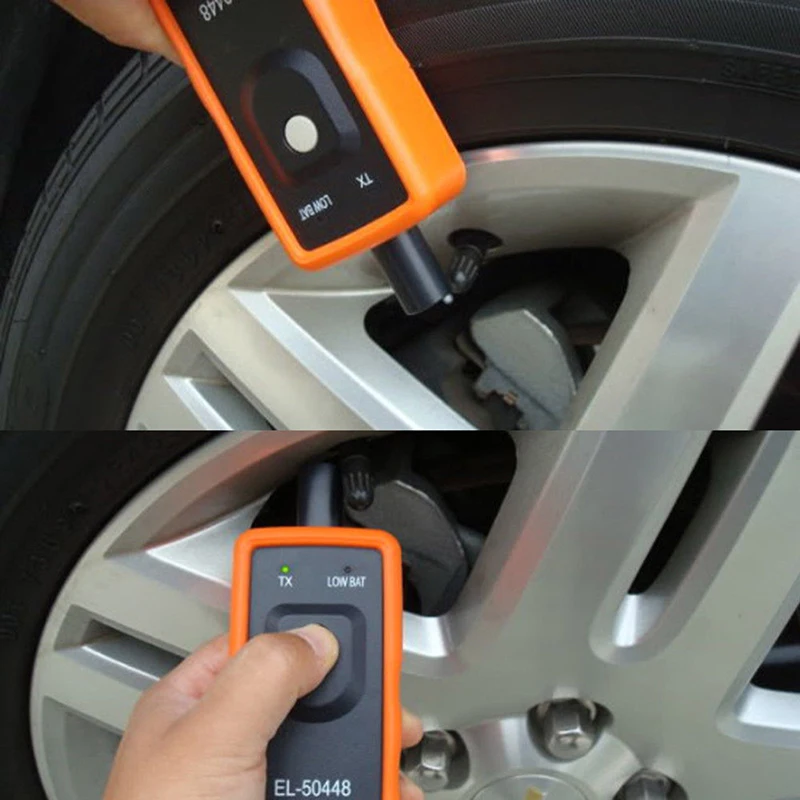
When air pressure loss occurs in the tire, the TPMS will notify the driver with a flat tire warning light. This means the tire is not at its proper inflation for some reason - which may be due to tire or valve damage, but either way, the tire needs to be reinflated and repaired.
These sensors ensure the tires do not reach dangerous levels of deflation, which can further damage the tire, the rim, and even the TMPS unit if one is not careful. For this reason, they have become a mandatory part of vehicle manufacturing in the US since 2008.
Tires that are not inflated correctly will have accelerated tread wear, shortening their service life. The lower inflation widens their footprint, compromising their driving safety and causing more pressure build-up during their performance - which will ruin their fuel economy. Additionally, the wider footprint will ruin the tires' wet weather performance, while also increasing the braking distance. In other words, it will ruin the vehicle's performance and driving safety.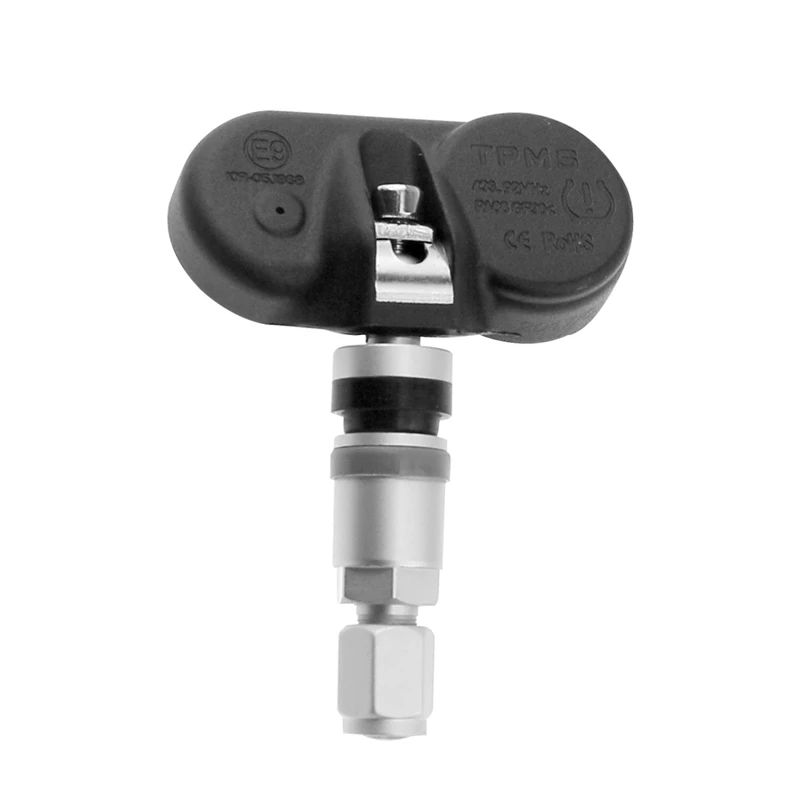
There are two different types of tire pressure monitoring systems available on the market. Generally speaking, their purpose is the same, but the way they operate is completely different.
The two types are:
Direct TPMS systems are the most common. This type uses sensors mounted onto the rims, inside the tire, to measure the inflation of each tire separately. When the air pressure in a tire drops below 25% from the recommended inflation level, the sensor notifies the computer system of the vehicle and the low-pressure warning light on the dashboard turns on.
Direct TPMS systems consist of 5 main parts: the 4 sensors mounted onto the wheel of each tire (usually near the valve stems) and the indicator in the vehicle's computer system. Therefore, when it is time for the vehicle's maintenance, replacing a direct TMPS system will be a bit more costly.
There are two types of direct TPMS systems:
High line TPMS systems are fitted with low-frequency transmitters near the wheels, which are used by the vehicle to force the transmission between the sensor and the computer system. These types of sensors are not turned on and do not transmit constantly. Instead, the vehicle will regularly ask for information regarding the tire pressure levels from the sensors when the ignition is turned on and repeatedly during the drive.
The high line system activates the transmitters one after the other, which will help later determine which sensor has sent the low tire pressure warning. The sensors can be located based on their unique ID, which will show the position of the sensor. This system type offers the advantage of not draining the vehicle's battery.
Low line TPMS systems use the units mounted on the wheels to transmit the tire's air pressure levels on fixed or random intervals. However, as the sensors of the tires are not connected, they may transmit simultaneously. This can lead to the collision of the pressure messages, and measures must be taken for the vehicle to be able to correctly receive them. To combat the collision of the messages, one TMPS system can send the same message multiple times.
However, as the sensors of the tires are not connected, they may transmit simultaneously. This can lead to the collision of the pressure messages, and measures must be taken for the vehicle to be able to correctly receive them. To combat the collision of the messages, one TMPS system can send the same message multiple times.
Some low line systems make sure the TMPS units transmit more often and send more frequent transmissions when sudden change or high temperatures are detected. In this manner, the sensors make sure the vehicle receives the transmission. Most vehicles are equipped with this type of direct TMPS as it is less costly.
Indirect TMPS systems work with the vehicle's Antilock Braking System. The ABS monitors the wheel speed and it helps out the indirect TPMS system as well. When the tire pressure drops in the tire, it will roll at a varied wheel speed, compared to the other tires. The computer system notices this and makes the low-pressure light come on.
The Indirect TMPS system does not need additional components to be mounted on the wheels as it works with the ABS monitor. As a result, when the system needs to be replaced, additional labor costs and parts will not need to be paid for.
The main difference between the direct and indirect tire pressure monitoring system types is the manner in which they measure whether the tires are correctly inflated or not. But which TPMS type is the better one?
For everyday vehicles' and customer needs, the direct TPMS system seems to work better. This is due to the nitpicky control of indirect TPMS systems, which need to be recalibrated each time the pressure in the tires is changed or when the tires are replaced. As a result, such systems give too much control to the vehicle's owner, which is probably not a good idea with critical safety functions.
Furthermore, the biggest issue with indirect TPMS systems is that it only turns on the low tire pressure light when one tire has different pressure levels from the rest.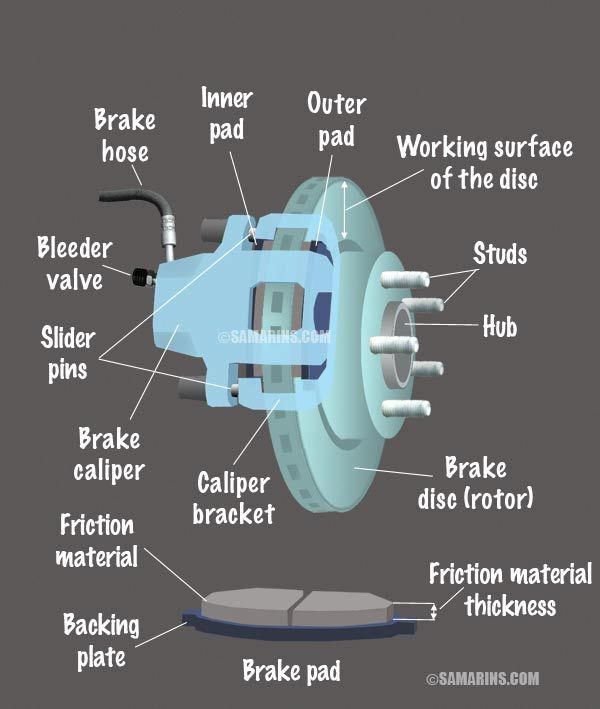 However, when all four tires are deflated to a certain degree and function in that manner, the indirect TPMS will not notify the driver. This is still classified as low inflation pressure and it will cause an issue in the long run, but the indirect TPMS system will not notice it.
However, when all four tires are deflated to a certain degree and function in that manner, the indirect TPMS will not notify the driver. This is still classified as low inflation pressure and it will cause an issue in the long run, but the indirect TPMS system will not notice it.
Under-inflated tires result in a shortened service life, a longer braking distance, a ruined fuel economy, and weaker traction. Therefore, direct TMPS sensors are more reliable for the average driver and they will result in fewer headaches during the vehicle's performance.
The benefits of a tire pressure monitoring system (TPMS) are the exact opposite of what under-inflated tires cause. When the tire pressure is monitored in the tires, it gives the driver control over the vehicle and ensures that it can perform in the correct manner. A tire pressure monitoring system will allow the driver to notice incorrectly inflated tires, and to prevent any possible problems when the low pressure light comes on.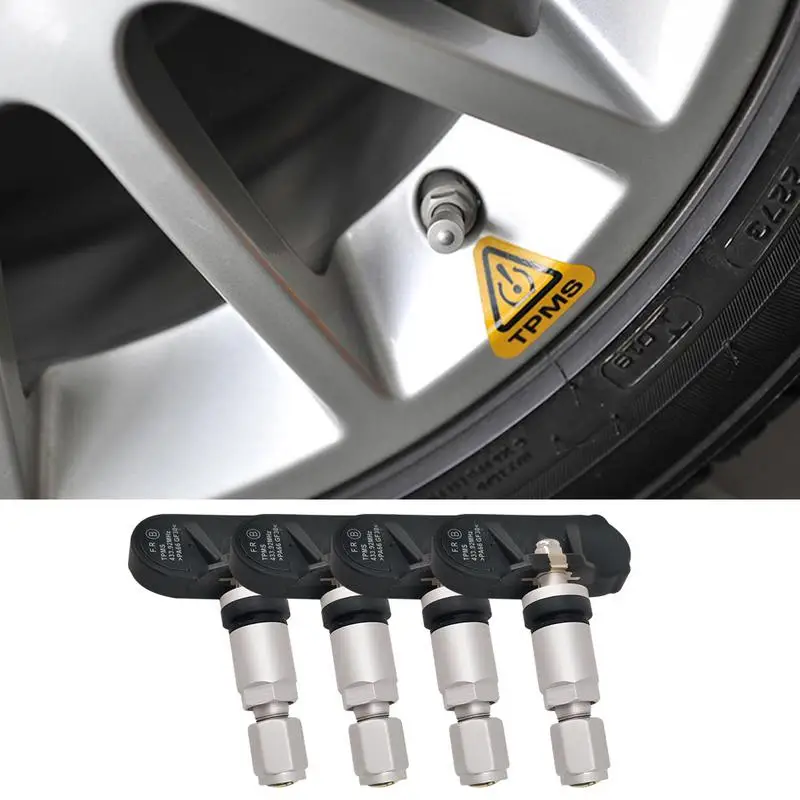
Proper tire pressure inflations optimize the tire's surface contact throughout its performance. In this manner, they optimize the tire's traction, ensure a shortened braking distance, improve the fuel economy and ensure a slower and even wear along the tread area.
Therefore, when the TMPS system receives regular maintenance and performs in the proper manner, it will ensure the vehicle's optimal performance.
When the tire pressure monitoring system (TPMS) needs to be replaced depends on its type. The main reason for the TPMS' replacement is damage, corrosion, and run-down batteries.
The location of the tire pressure sensors on the wheels makes them face a higher possibility of damage during the vehicle's everyday performance. This damage can be caused by a flat tire, potholes, or accidents, which do not necessarily just harm the sensors but can create bigger issues as well.
Corrosion is usually the result of the road salt used in winter weather conditions.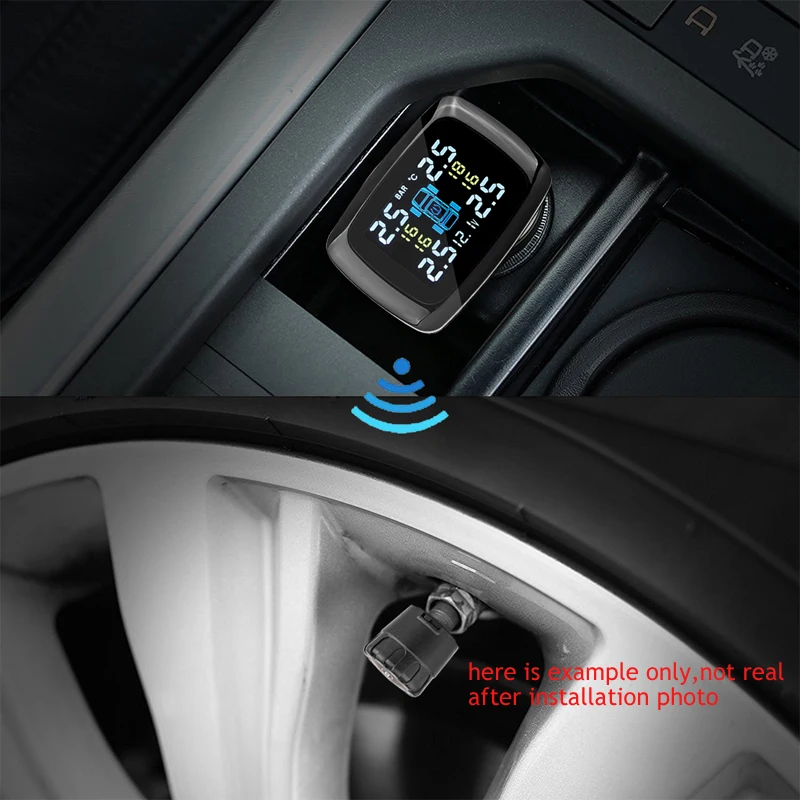 If the tires do not use snap-in, rubber valve stem TPMS sensors, the system faces a higher chance of corrosion and excessive rusting. Road salt can easily harm the rest of the vehicle as well.
If the tires do not use snap-in, rubber valve stem TPMS sensors, the system faces a higher chance of corrosion and excessive rusting. Road salt can easily harm the rest of the vehicle as well.
TMPS sensors, like most electronic devices, run on battery life. While they utilize a battery-saving operating method, their lifespan is still limited. Generally, sensors can run for 5-10 years, depending on what type you decide to get. If you notice that the sensors are nearing the end of their battery life, it will be more cost-efficient to change them when replacing the tires - it will save you on the labor cost!
Still, regular checkups and maintenance of the tire pressure monitoring system are recommended for safety. It will allow the tire pressure sensors and the low pressure light to function in the necessary manner, without having to result in emergency fixes when the system breaks down, due to any of the before mentioned reasons.
Unfortunately, the TMPS sensor of tires cannot be repaired.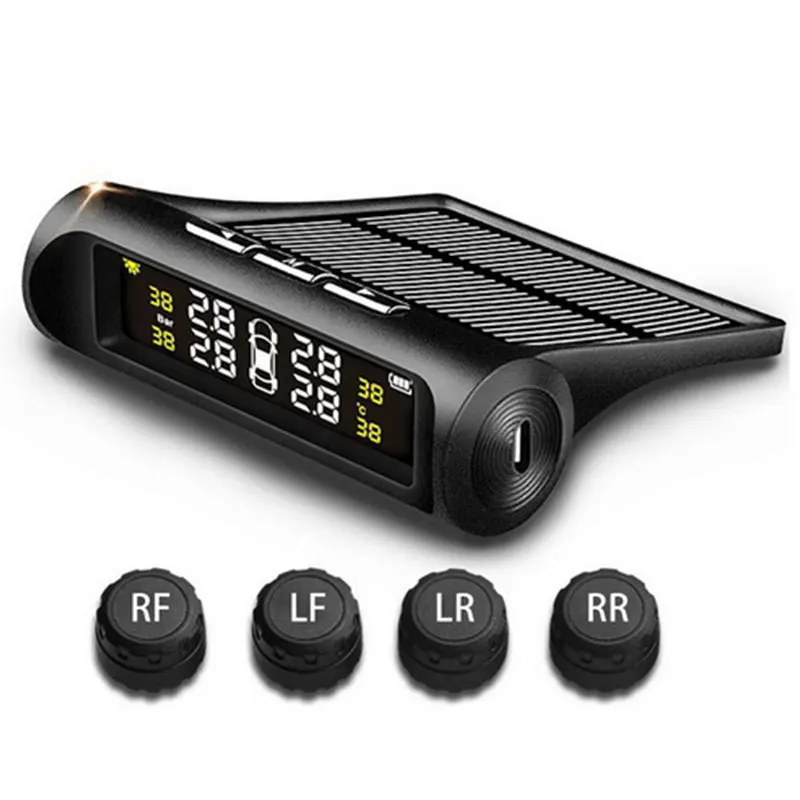 When a TMPS unit goes bad for any reason, either the entire system or the bad unit will need replacing.
When a TMPS unit goes bad for any reason, either the entire system or the bad unit will need replacing.
Yes, the United Stated Congress legislated the TREAD Act, which requires all light motor vehicles to be equipped with a proper TPMS sensor. As of 2008, all new passenger vehicles must have a TPMS sensor installed. For trucks and vans, a TMPS sensor is not mandatory.
Can you drive with a broken TPMS sensor?The vehicle can be driven when the TPMS sensor is broken, but it is recommended to have it fixed as soon as possible. If the TMPS sensor is not doing its job correctly, you will not know when the tires lose air pressure. This can lead to damage to the tire, the rim, and the vehicle if you are not careful.
To replace a TPMS sensor, will typically cost you between $220 and $240. The price to replace the parts needed for the TMPs is around $170 and you will need to add the labor cost, which is usually between $50 to $70 depending on where you take your vehicle.
When the tire pressure monitoring light turns on, it means the tire or tires have lost air pressure. In such instances, the tire pressure runs lower than what is recommended and it needs to be fixed to ensure the vehicle's performing security.
In America and Europe, a tire pressure monitoring system is an indispensable element of a car. Most likely, in the near future the same rules will be adopted in Russia.
But even if this system does not become mandatory, nothing prevents it from being installed in a car if the standard TPMS is not provided by the manufacturer: it is much better to find out in time that the wheel is flat than to wait for sad consequences.
TPMS (tire pressure monitoring system) monitors changes in tire pressure: even a small decrease in pressure in one wheel increases fuel consumption, worsens car handling and increases tread wear.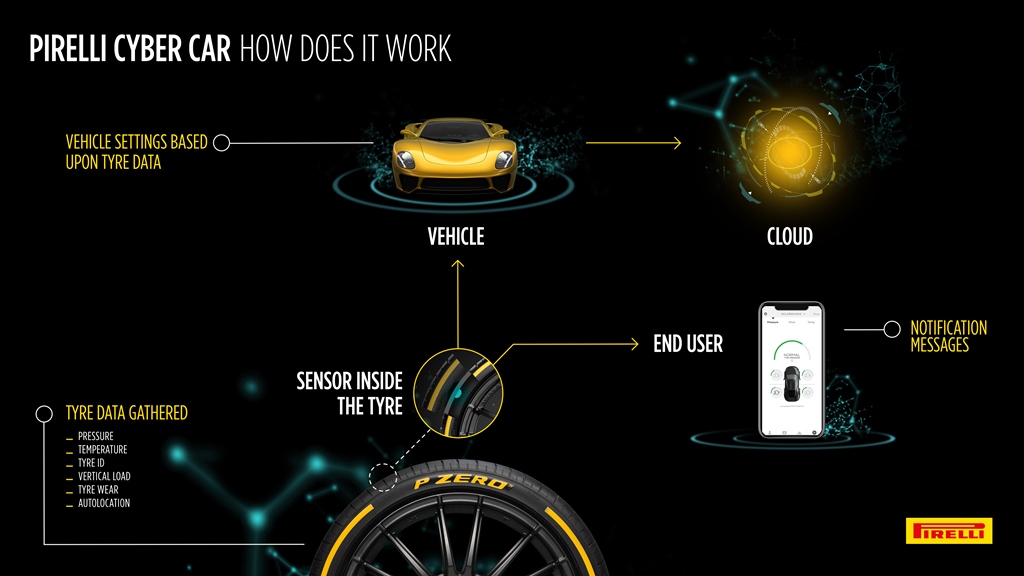
Now the pressure control system is divided into systems of direct (direct) and indirect (indirect) directions - we will tell you in more detail what it is.
In direct measurement systems, sensors are placed on the valves of all wheels. They can be installed inside or outside. The sensor detects the level of pressure in the wheel and transmits information via radio to the control unit. Here, the accuracy of the readings plays a big role - you can even track a decrease in pressure by only 0.1 bar.
The "direct" system is more expensive than the "indirect" one, but it transmits information more accurately and faster. She, of course, has her own nuances: if you have to swap tires for even wear, then information about this will need to be entered into the control unit.
The so-called "indirect" TPMS is essentially a software extension for ABS: in its work it uses standard wheel rotation sensors.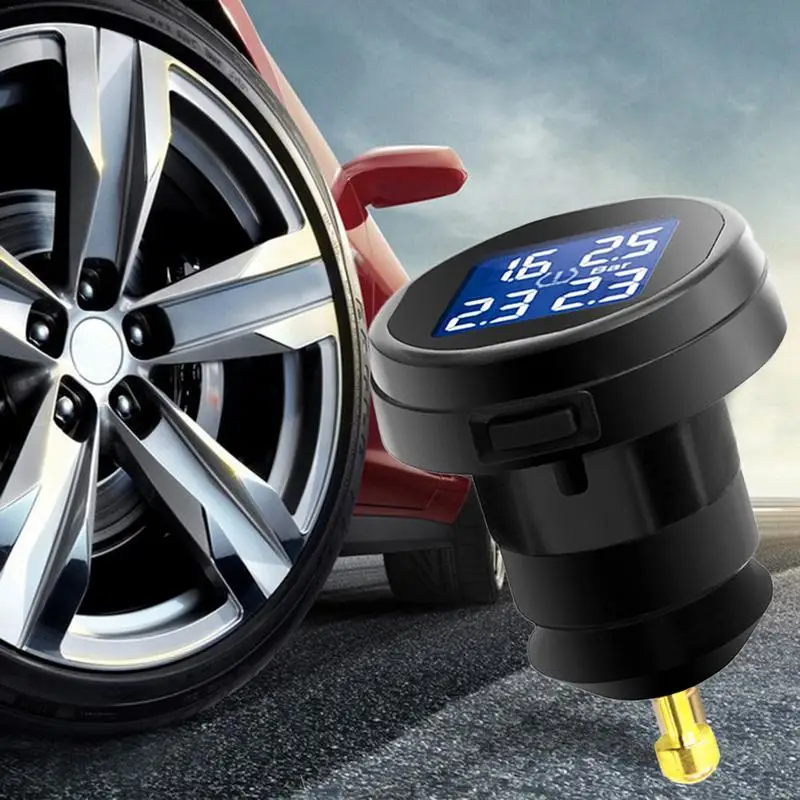 The system monitors changes in wheel speed and can diagnose tire pressure loss based on this information.
The system monitors changes in wheel speed and can diagnose tire pressure loss based on this information.
In this case, we are not talking about exact values, but only signals a significant deviation from the usual pressure - a significant deviation in this case is 0.3 bar, and a dangerous one is 0.5 bar.
"Indirect" systems may erroneously transmit a signal for a decrease in tire pressure also when:
Uneven load distribution
Frequent change from lane to lane
slippage
Sharp descents and ascents
But this can be adjusted, for example, by setting an alert delay. You can also reboot the system so that it adjusts to different tire pressures at startup.
The AIRLINE range includes 2 models of the "direct" system.
Tire pressure monitoring system TPMS BLACK ATP-MS-01 includes 4 sensors and a receiving module with a color LCD display. The sensors are mounted on the nipple of the car wheel, measure the pressure and air temperature in the tire and transmit information about the pressure value via radio to the display. When the tire pressure changes, the system transmits information with sound signals and displays it on the display. The pressure and temperature thresholds are set in the display menu. The system can be installed independently - it does not require special skills.
The sensors are mounted on the nipple of the car wheel, measure the pressure and air temperature in the tire and transmit information about the pressure value via radio to the display. When the tire pressure changes, the system transmits information with sound signals and displays it on the display. The pressure and temperature thresholds are set in the display menu. The system can be installed independently - it does not require special skills.
The receiving module is powered by the car's cigarette lighter socket, there is also a USB output for convenient parallel charging of the smartphone. The kit includes a receiver with a display, 4 external pressure sensors, 4 locknuts, a kit for mounting sensors, a warranty card and instructions. The operating temperature of the sensors is from -40°С to +125°С.
Tire pressure monitoring system TPMS wireless INSIDER SOLYAR ATP-MS-02 includes 4 sensors and a receiving module with a color LCD display. When the tire pressure changes, the system transmits information with sound signals and displays it on the display. The sensors are marked position, but the wheels can be swapped, everything is reconfigured. The operating temperature of the sensors is from -40°С to +125°С.
When the tire pressure changes, the system transmits information with sound signals and displays it on the display. The sensors are marked position, but the wheels can be swapped, everything is reconfigured. The operating temperature of the sensors is from -40°С to +125°С.
The kit includes a double-sided adhesive tape for fixing the receiving module on the dashboard of the car, it can also be mounted on a Velcro mat.
The receiver module is powered by a built-in lithium-polymer battery, which is charged by a built-in solar panel or a microUSB socket. The kit includes a receiver with a display, internal sensors, a USB-microUSB cable, double-sided tape, a warranty card and instructions. Tire fitting is required for installation, so we recommend contacting a service center for proper installation.
 S.
S.  S.
S. | Vitaly Kabyshev, . Photo of manufacturers | |
| A punctured tire is always very annoying. But it is better to know about the flat tire in advance - this is where tire pressure sensors will help. |
The first patent for a tire was obtained in 1846, and since then the wheels have been constantly punctured. It is clear to anyone that a flat tire does not bode well. Yes, and dropped pressure can be very dangerous: it’s not for nothing that in the “Daily Maintenance” section of the car’s operating instructions, the item “Checking tire pressure” is one of the first.
When a tire "breathes", the rolling resistance increases significantly. Where does this lead? To an increase in fuel consumption, increased tire wear and, of course, to the side slip of the car. Moreover, such a small drift to the side can be attributed to the slope of the road or rut. So the driver, by mistake or inexperience, can continue to move for quite some time. And the most dangerous thing about this is that in an emergency, for example, during a sharp maneuver or braking, a flat tire can break off the disc or turn over. And here it is not far from the accident.
Where does this lead? To an increase in fuel consumption, increased tire wear and, of course, to the side slip of the car. Moreover, such a small drift to the side can be attributed to the slope of the road or rut. So the driver, by mistake or inexperience, can continue to move for quite some time. And the most dangerous thing about this is that in an emergency, for example, during a sharp maneuver or braking, a flat tire can break off the disc or turn over. And here it is not far from the accident.
Therefore, this disgrace must be fought with all our might. And the sooner the driver notices the loss of pressure, the better. Of course, the easiest way is to check the pressure before the trip by connecting a pump or pressure gauge to each wheel in turn. But we are lazy and forgetful people. And the pleasure of poking around in the cold or in the rain with some kind of devices is small. Moreover, there is already a whole bunch of systems that can check this same pressure.
China-made caps indicate pressure loss by changing color.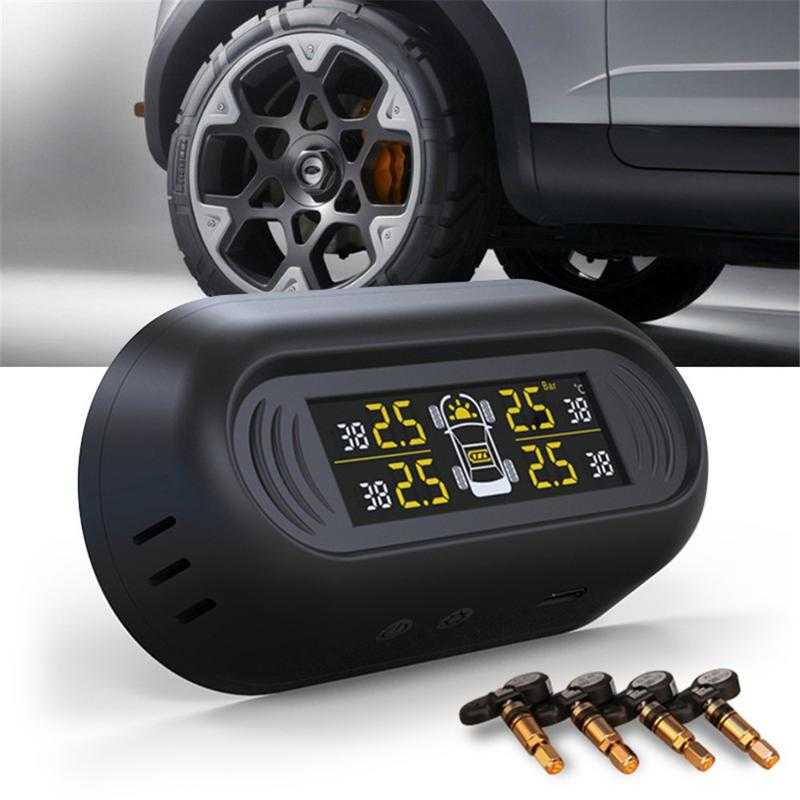 Informativeness is good, accuracy is questionable.
Informativeness is good, accuracy is questionable.
The simplest of them are special caps with color indicators, which are installed instead of the standard caps on the boost valves. The pressure dropped below, say, two atmospheres - a warning yellow (orange, purple) strip will appear under the transparent cap of such a miracle cap. Yeah, it's clear that something is wrong with the wheel, we need to check. The pressure has dropped even lower - the cap will “paint” in a different, usually red color, which will indicate the criticality of what is happening. The advantage of this approach is simplicity. Minus - not enough good information content. After all, the caps can only be seen during a stop. Still, getting around the car before the trip, looking at the colors of the caps, is much easier than measuring the pressure every time.
Another disadvantage is that the caps begin to inform about the change in pressure only when it falls below some certain values, which, by the way, can be quite normal for your car and your wheels.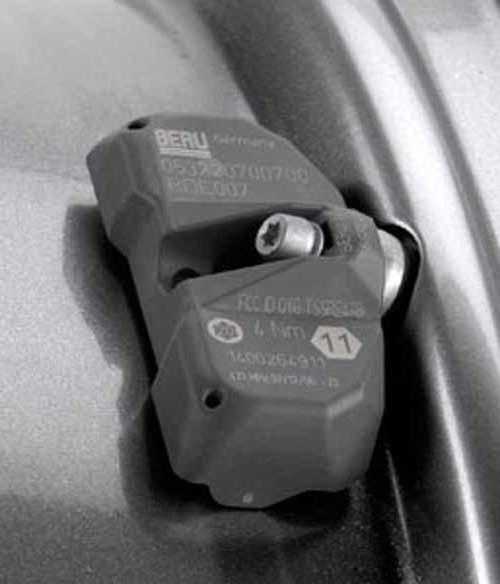 So, you need to select them exactly for your car.
So, you need to select them exactly for your car.
The radio sensors of many electronic monitoring systems are mounted on the disk using special clamps.
And in order to notice something wrong while driving, it would be nice to have an electronic system on board that would automatically notify you of dangerous pressure drops. And not just notify, but would do it on time (so that there was time to orient) and without false positives.
The installed control system in this case will warn the driver at the right time about a change in the corresponding parameter and give him enough time to stop the car safely. It is clear that in cases of a serious puncture or explosion of a tire, such systems will not help, since the driver will feel the car pull without any sensors. But with a “slow” puncture, such electronics are simply irreplaceable.
There are, for example, systems that transmit tire pressure and temperature data to the central unit via radio. And there are those who can transmit this data via Bluetooth to phones or communicators.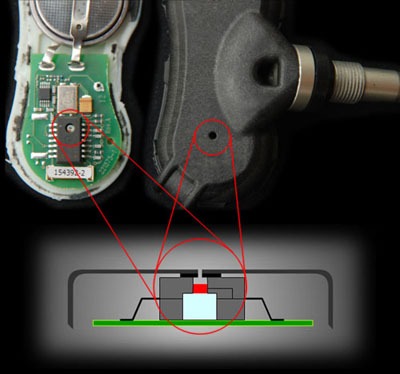 Well, it's very convenient.
Well, it's very convenient.
X-Pressure pressure monitoring system developed by Pirelli. In the simplest version of Optic, it consists of four caps that are installed on regular valves. And they signal a drop in pressure by a change in color.
But there are more tricky systems that work without "real" pressure sensors, but through ABS. It is they who are usually put in the standard configuration of cars. How do they work?
Electronics with the help of sensors determines the speed of the wheels and their relative difference at each moment of time. As you know, when the pressure drops, the height of the tire profile becomes lower. Consequently, the speed of rotation of the wheel with the "sick" tire increases, therefore, the difference in the frequencies of rotation of the wheels on the same axle also increases. As a result, the system captures these changes - and gives an alarm signal.
Acoustic X-Pressure system. Sensors are built into the caps that register pressure, and radio transmitters that provide communication with the central unit. As soon as the pressure has dropped, a corresponding indication appears on the display of this unit and a warning sound signal is heard. Batteries in caps are enough for about 5 thousand hours of operation, which corresponds to five years of operation. Replacement of batteries in the caps is not provided, therefore, at the end of the service life, the set must be changed completely.
As soon as the pressure has dropped, a corresponding indication appears on the display of this unit and a warning sound signal is heard. Batteries in caps are enough for about 5 thousand hours of operation, which corresponds to five years of operation. Replacement of batteries in the caps is not provided, therefore, at the end of the service life, the set must be changed completely.
Why is this indirect method of determining tire pressure bad? Such systems can work, for example, in long turns, when for a relatively long time the system detects a large difference in the rotational speeds of the wheels of different sides (after all, the outer wheels spin at a higher speed than the inner ones). And these are flowers.
One of the more sophisticated X-Pressures, AcousticBlue can transmit pressure data via Bluetooth to a mobile phone. There is such a thing from 160 euros.
In some cases, such systems are useless at all. For example, when tires with run-flat technology are installed on a car.